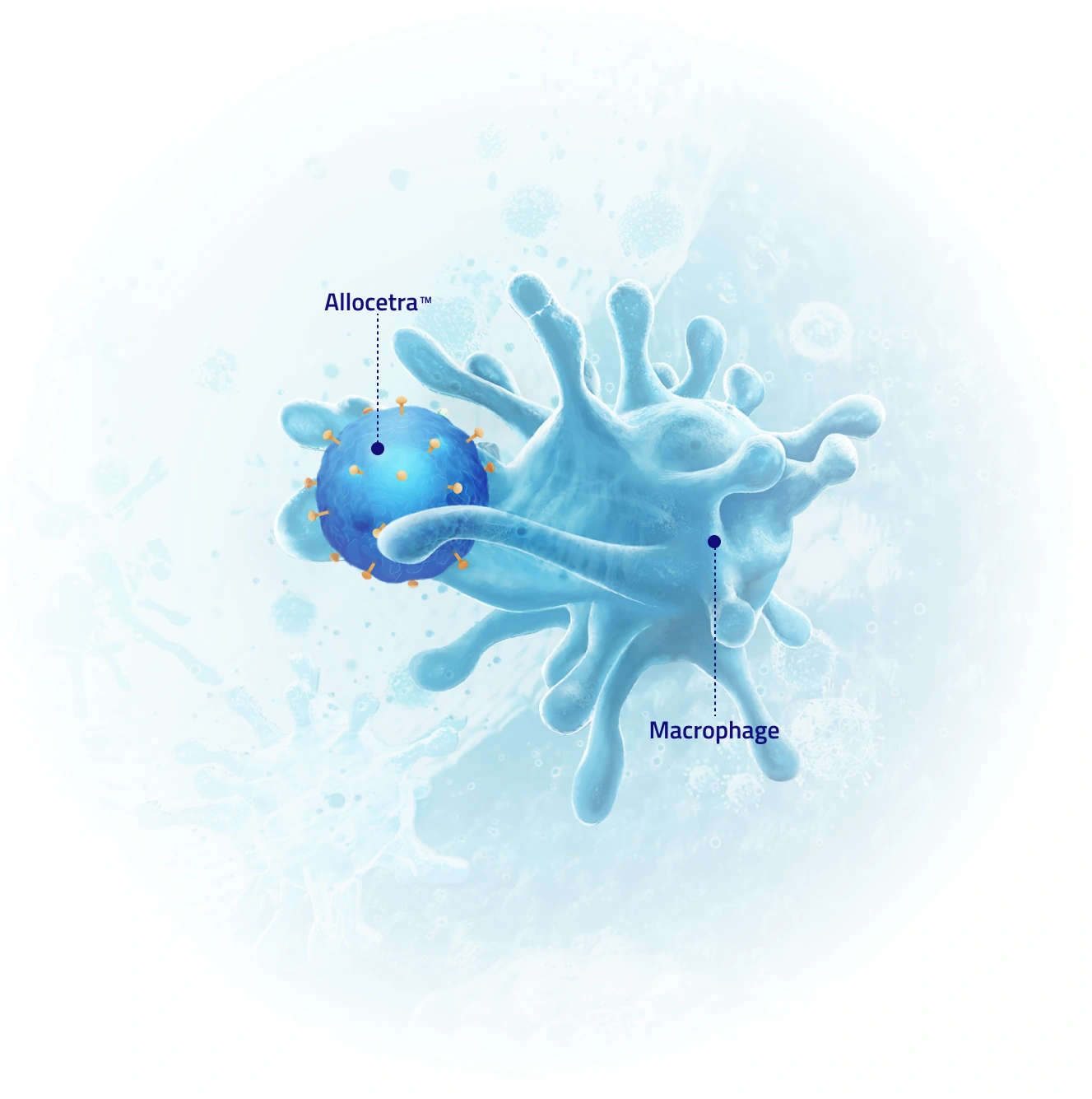Harnessing the natural healing power of macrophages to treat inflammatory diseases.
Enlivex’s proprietary off-the-shelf cell therapy platform Allocetra™ with its novel therapeutic mechanism has the potential to redefine the way inflammatory diseases are treated.

Allocetra™ offers off-the-shelf and easy to use, flexible administration options, including systemic intravenous infusion or targeted local injections.
Over 150 patients have been safely treated with Allocetra™ in various clinical trials, with no reported drug related serious adverse events.
Enlivex is evaluating Allocetra™ for the treatment of multiple indications including acute inflammatory diseases such as sepsis and chronic inflammatory diseases like osteoarthritis.

-
clinically tested
-
no serious adverse events
-
cost-effective cell therapy
If you would like to learn more about Enlivex, Allocetra™ or are interested in participating in one of our clinical trials, please contact us.
FOR MORE INFORMATION
